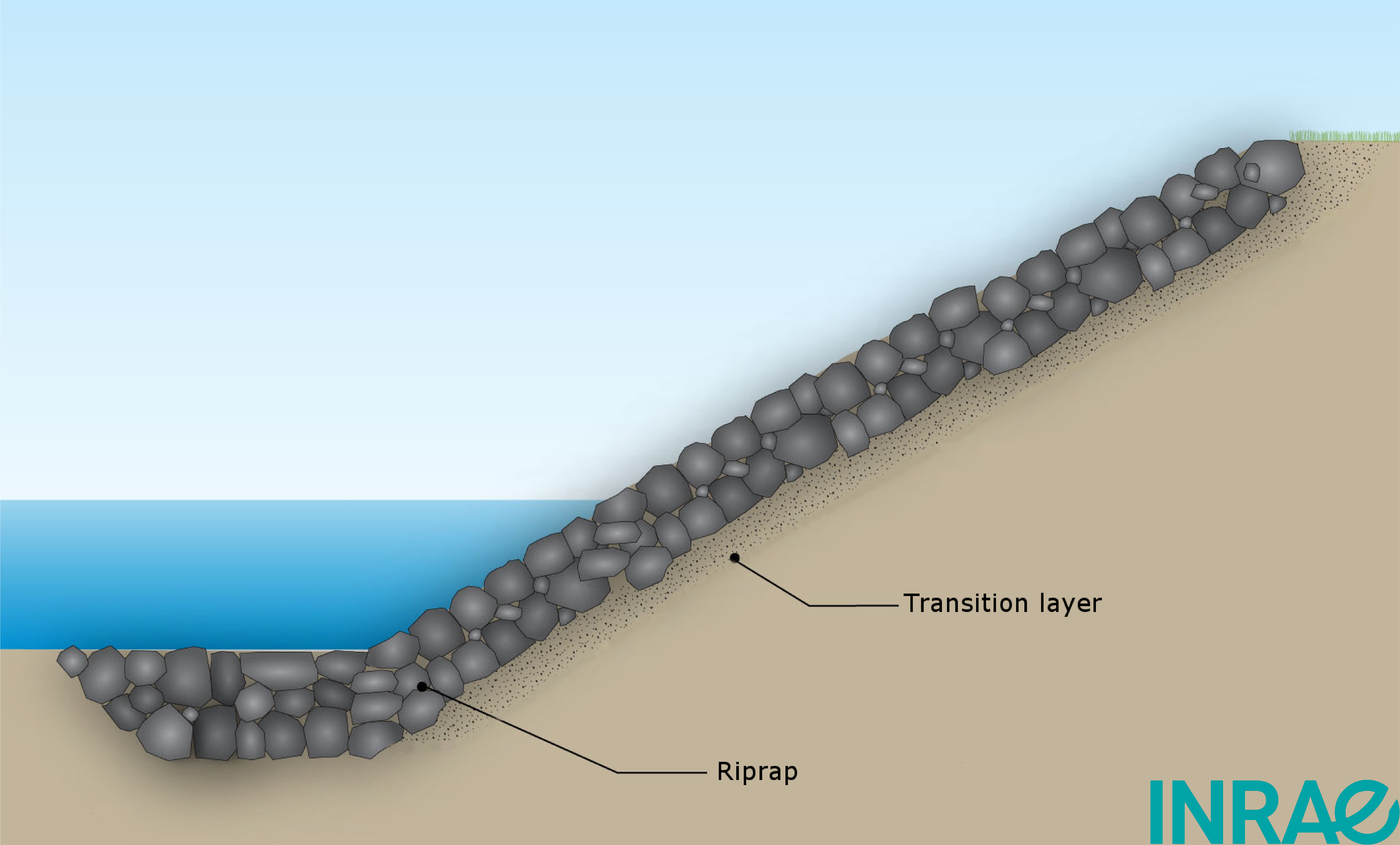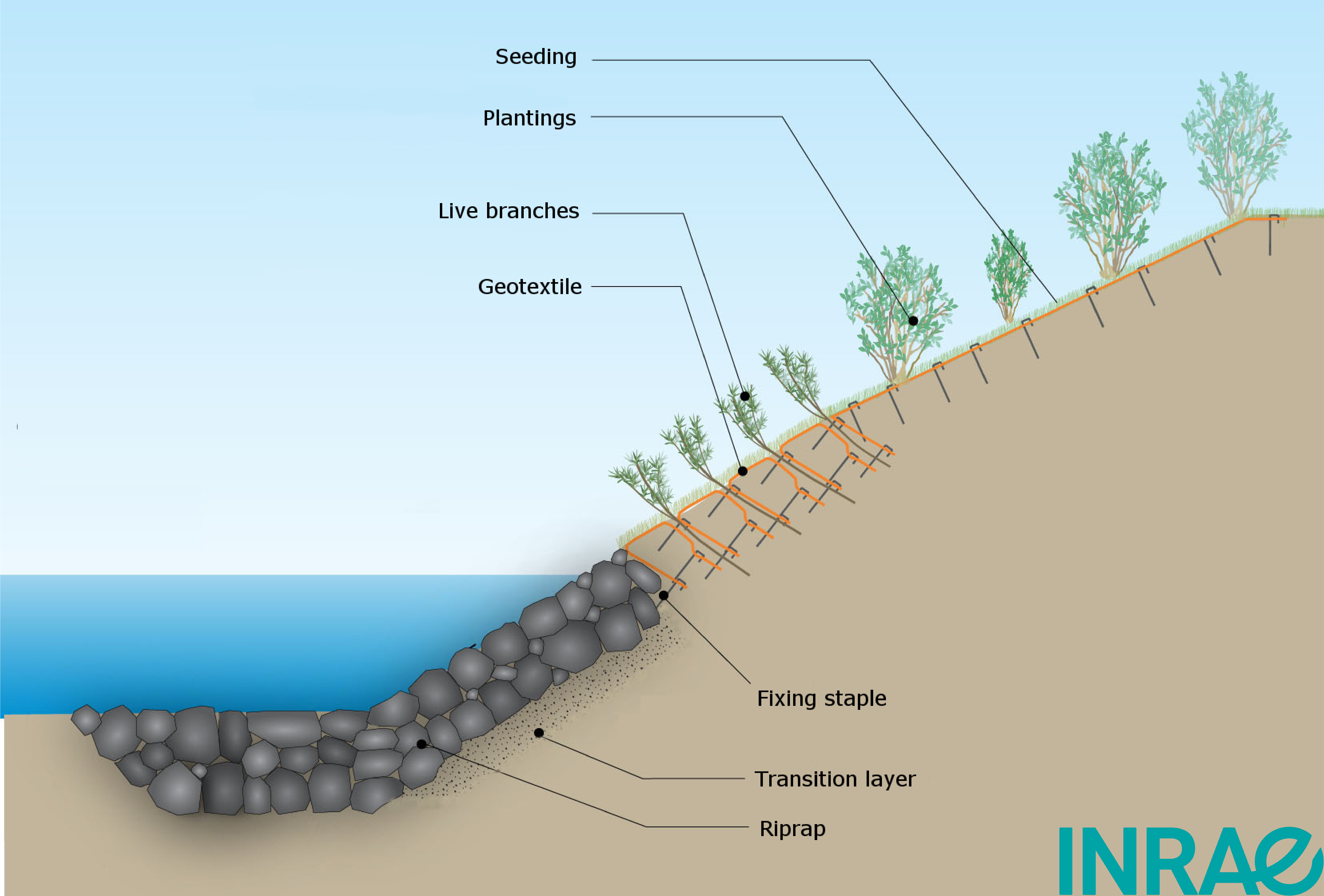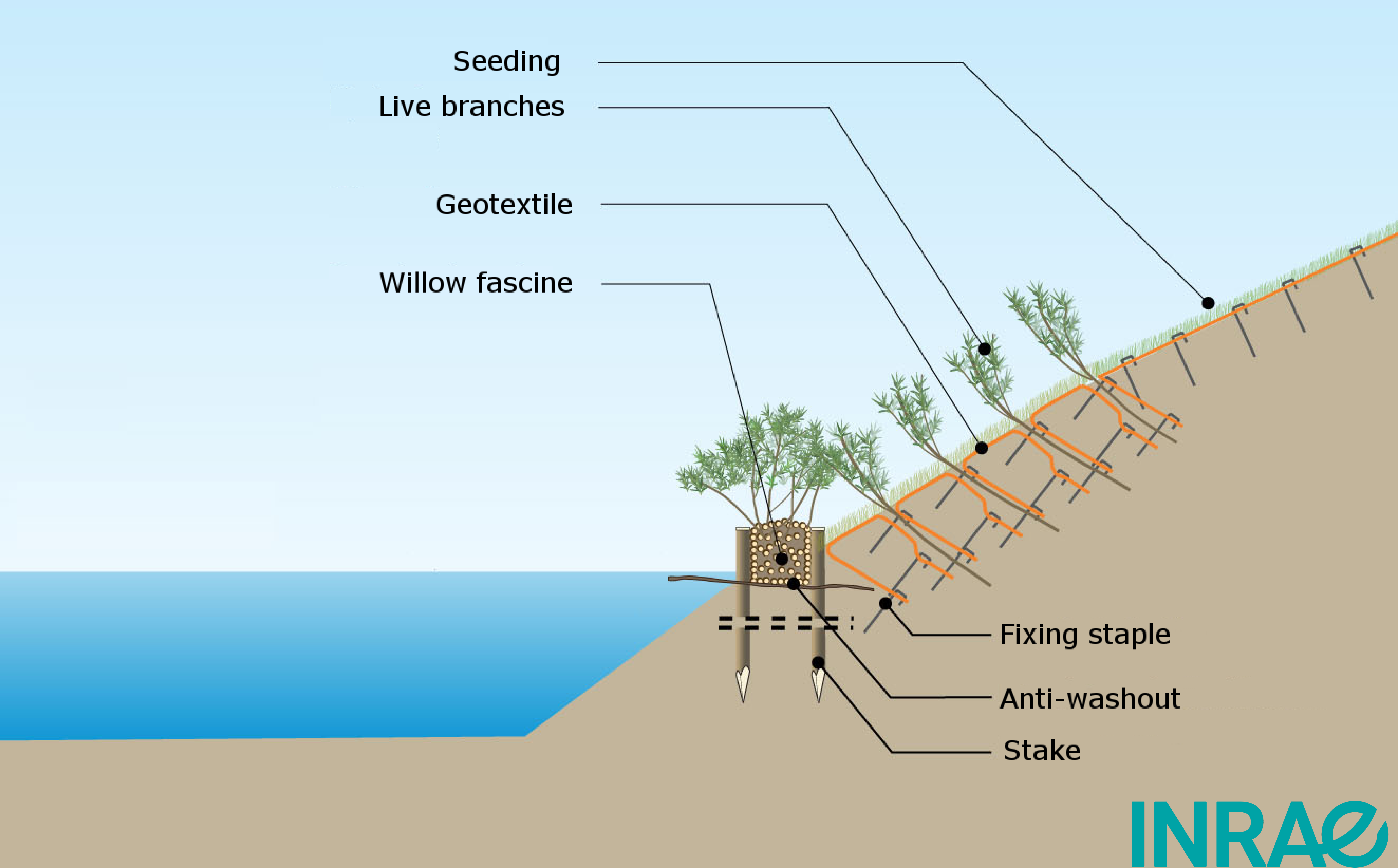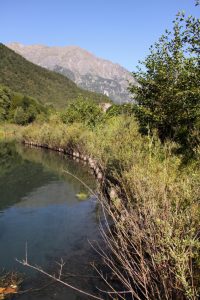There are three types of river bank protection: civil engineering structures consisting of stone or concrete masonry, gabions or riprap; soil bioengineering works, consisting of living plants and benefiting from the biological, physiological and physical properties of these plants, to protect the banks against erosion; mixed construction that combines civil engineering and soil bioengineering techniques.

Civil engineering techniques
Riprap, the most frequently used technique, consists of depositing rocks on the portion of the bank to be protected.

Mixed techniques
Mixed techniques borrow know-how from both the civil engineering and soil bioengineering fields. They often use a combination of riprap at the bottom of the bank and plant techniques at the top of the bank.

Soil bioengineering techniques
Soil bioengineering uses the properties of plants to provide technical solutions to soil protection problems and more specifically to erosion control. Plant-based engineering techniques are inspired by natural plant formations (herbaceous and/or woody), present on the natural banks and able to withstand strong forces.
To elaborate
Adam, P., N. Debiais, F. Gerber, B. Lachat. (2008). Le génie végétal, Un manuel technique au service de l’aménagement et de la restauration des milieux aquatiques. Ministère de l’écologie, du développement et de l’aménagement durables.
Bonin, L., A. Evette, P. A. Frossard, P. Prunier, D. Roman and N. Valé (2013). Génie végétal en rivière de montagne, Connaissances et retours d’expériences sur l’utilisation d’espèces et de techniques végétales : végétalisation de berges et ouvrage bois. Grenoble.
Frossard, P.A., Evette, A., (2009). Le génie végétal pour la lutte contre l’érosion en rivière : une tradition millénaire en constante évolution. I.E.A.T., 99–109.
Gray, D. and R. Sotir (1996). Biotechnical and Soil Bioengineering Slope Stabilization – A Practical Guide for Erosion Control. New York, John Wiley and Sons, Inc.
Lachat, B. (1994). Guide de protection des berges de cours d’eau en techniques végétales. Paris, Ministère de l’Environnement.
THE CITY OF CALGARY, (2012), Design guidelines for erosion and flood control projects for streambank and riparian stability restoration.
Zeh, H. (2009). Génie biologique, manuel de construction, Société suisse du génie biologique et Fédération Européenne pour le génie biologique.




